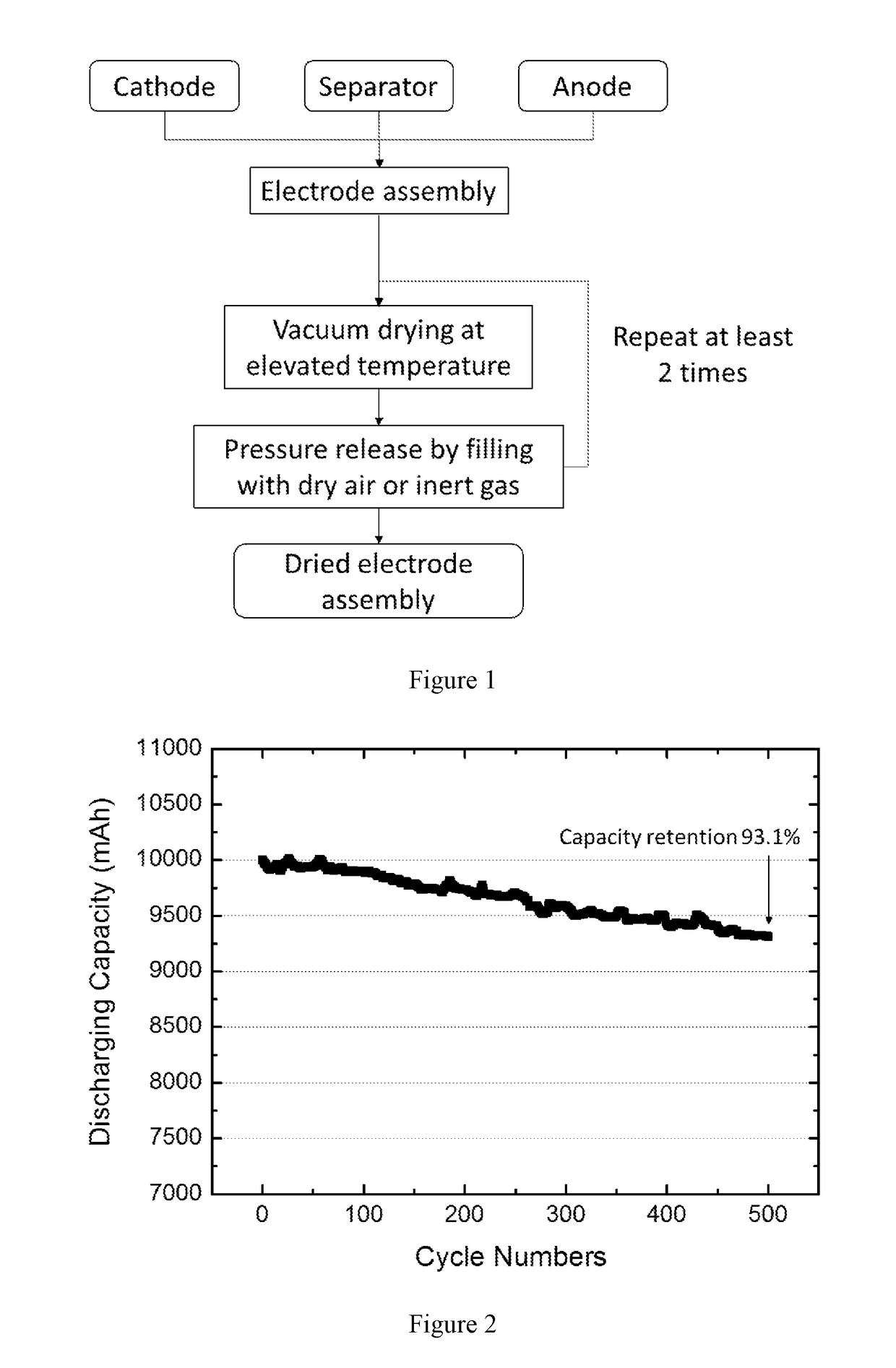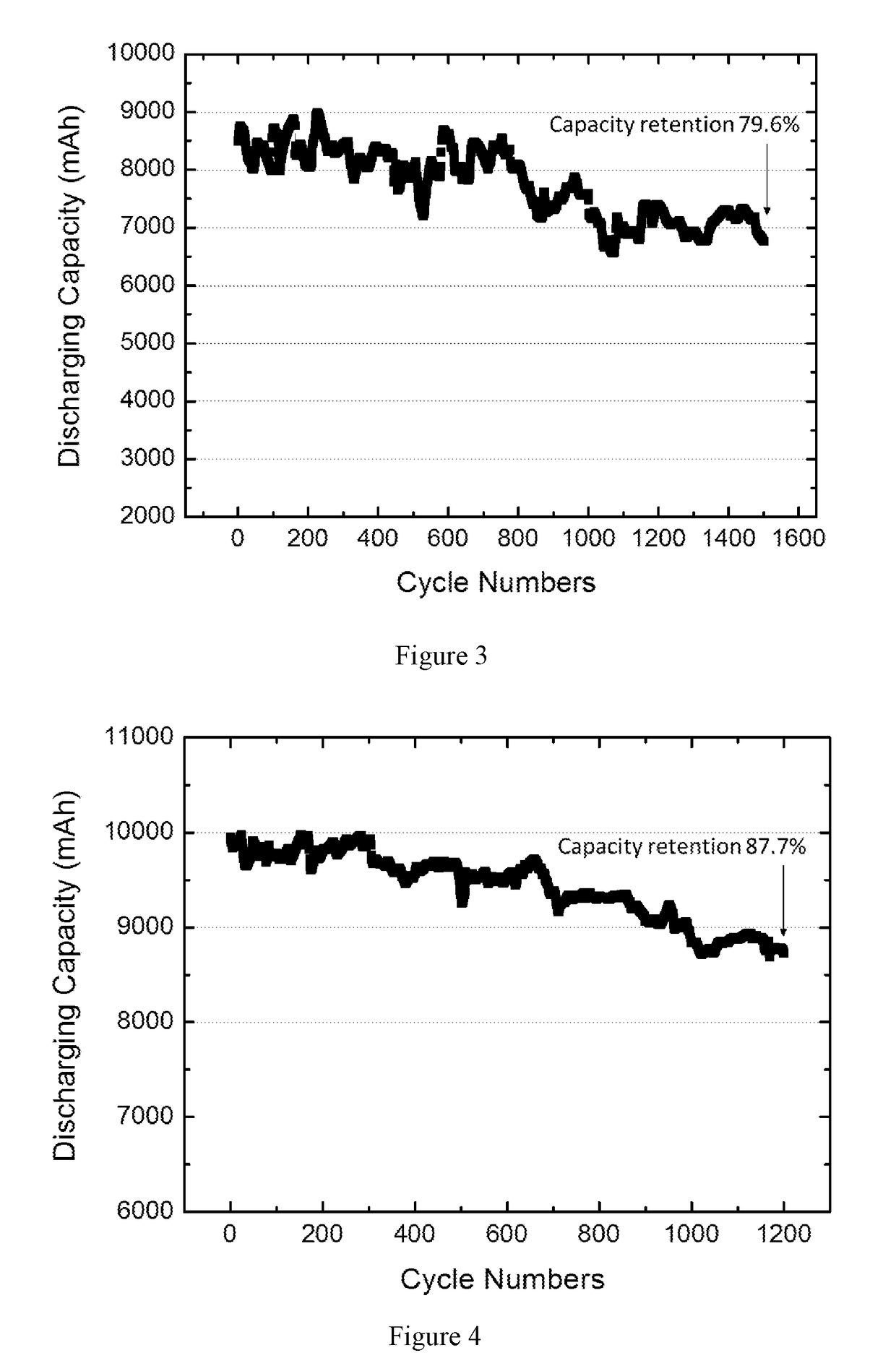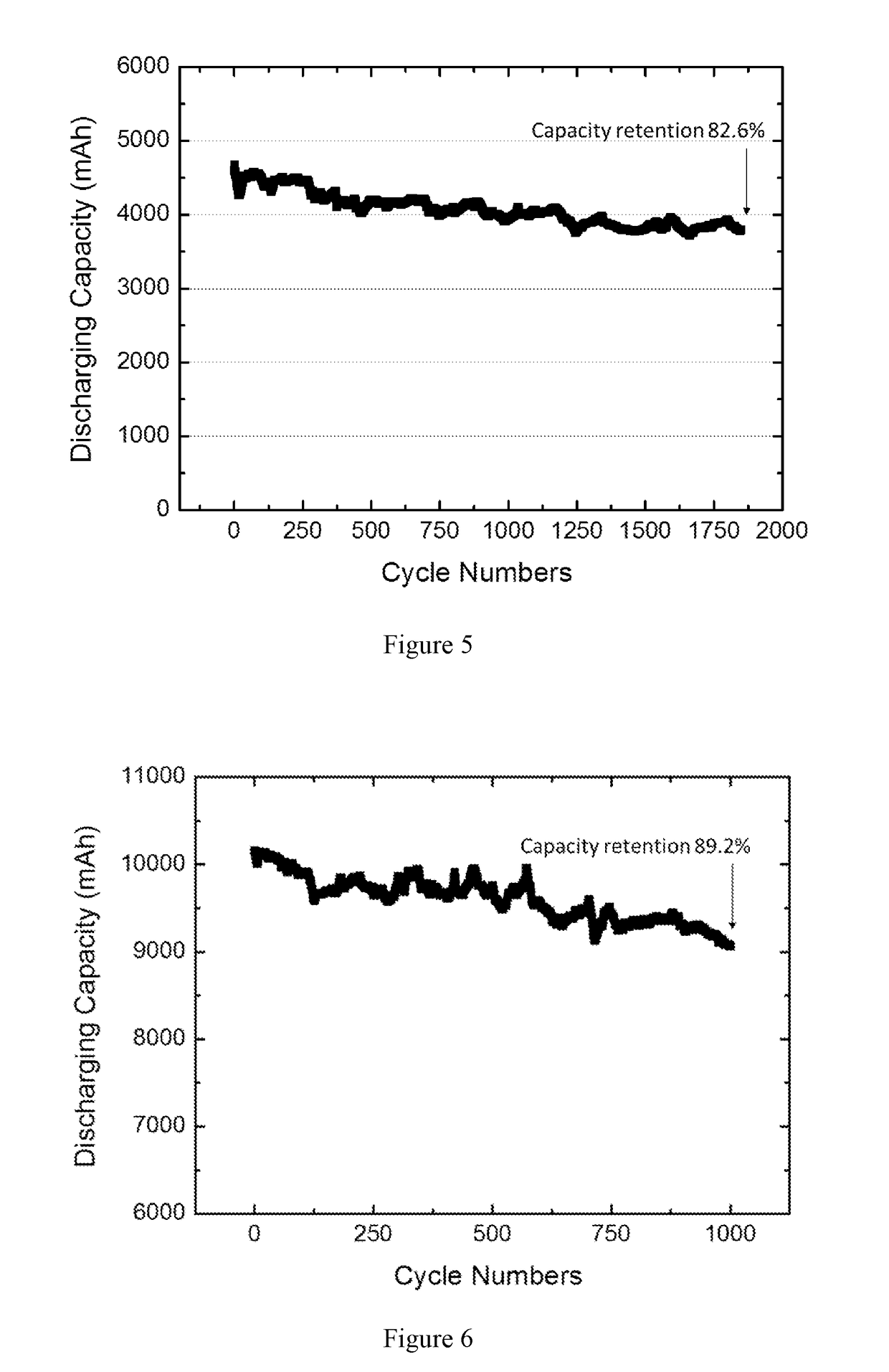Method of drying electrode assemblies
a lithium-ion battery and electrode assembly technology, applied in the field of batteries, can solve the problems of serious attenuation of electrochemical performance, affecting battery stability, and sensitive manufacturing process of lithium-ion batteries
- Summary
- Abstract
- Description
- Claims
- Application Information
AI Technical Summary
Benefits of technology
Problems solved by technology
Method used
Image
Examples
example 1
A) Preparation of Positive Electrode Slurry
[0124]A positive electrode slurry was prepared by mixing 94 wt. % cathode material (LNMC TLM 310, obtained from Xinxiang Tianli Energy Co. Ltd., China), 3 wt. % carbon black (SuperP; obtained from Timcal Ltd, Bodio, Switzerland) as a conductive agent, and 0.8 wt. % polyacrylic acid (PAA, #181285, obtained from Sigma-Aldrich, US), 1.5 wt. % styrene butadiene rubber (SBR, AL-2001, obtained from NIPPON A&L INC., Japan) and 0.7 wt. % polyvinylidene fluoride (PVDF; Solef® 5130, obtained from Solvay S.A., Belgium) as a binder, which were dispersed in deionized water to form a slurry with a solid content of 50 wt. %. The slurry was homogenized by a planetary stirring mixer.
B) Preparation of Positive Electrode
[0125]The homogenized slurry was coated onto both sides of an aluminum foil having a thickness of 20 μm using a transfer coater (ZY-TSF6-6518, obtained from Jin Fan Zhanyu New Energy Technology Co. Ltd., China) with an area density of about 26...
example 2
Assembling of Electrode Assembly
[0127]After drying, the resulting cathode film and anode film of Example 1 were used to prepare the cathode and anode respectively by cutting into individual electrode plates. An electrode assembly was prepared by stacking anodes, cathodes and separators interposed between the positive electrode and the negative electrode in the open air with no control of humidity. The separator was a microporous membrane made of nonwoven PET fabric (obtained from MITSUBISHI PAPER MILLS LTD, Japan), which had a thickness of 30 μm. The electrode assembly was dried in a vacuum oven inside a glove box under a pressure of 5×103 Pa at 100° C. for 2 hours. The drying chamber was then filled with hot, dry air having a water content of 5 ppm and a temperature of 90° C. The hot, dry air was retained in the drying chamber for 15 minutes before evacuating the drying chamber. This cycle was repeated 10 times.
Moisture Contents of Electrode Assembly, Electrodes and Separator
[0128]...
example 3
A) Preparation of Positive Electrode Slurry
[0132]A positive electrode slurry was were prepared by mixing 92 wt. % cathode material (LiMn2O4 obtained from HuaGuan HengYuan LiTech Co. Ltd., Qingdao, China), 4 wt. % carbon black (SuperP; obtained from Timcal Ltd, Bodio, Switzerland) as a conductive agent, and 4 wt. % polyvinylidene fluoride (PVDF; Solef® 5130, obtained from Solvay S.A., Belgium) as a binder, which were dispersed in N-methyl-2-pyrrolidone (NMP; purity of >99%, Sigma-Aldrich, USA) to form a slurry with a solid content of 50 wt. %. The slurry was homogenized by a planetary stirring mixer.
B) Preparation of Positive Electrode
[0133]The homogenized slurry was coated onto both sides of an aluminum foil having a thickness of 20 μm using a transfer coater with an area density of about 40 mg / cm2. The coated films on the aluminum foil were dried for 6 minutes by a 24-meter-long conveyor hot air drying oven as a sub-module of the transfer coater operated at a conveyor speed of abou...
PUM
| Property | Measurement | Unit |
|---|---|---|
| temperature | aaaaa | aaaaa |
| time period | aaaaa | aaaaa |
| time period | aaaaa | aaaaa |
Abstract
Description
Claims
Application Information
 Login to View More
Login to View More - R&D
- Intellectual Property
- Life Sciences
- Materials
- Tech Scout
- Unparalleled Data Quality
- Higher Quality Content
- 60% Fewer Hallucinations
Browse by: Latest US Patents, China's latest patents, Technical Efficacy Thesaurus, Application Domain, Technology Topic, Popular Technical Reports.
© 2025 PatSnap. All rights reserved.Legal|Privacy policy|Modern Slavery Act Transparency Statement|Sitemap|About US| Contact US: help@patsnap.com



